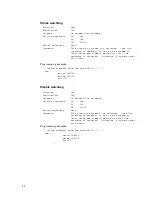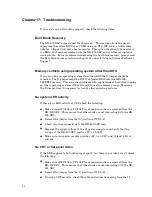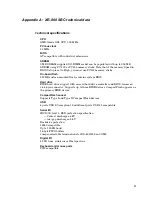
System locks up on power-up; may or may not respond to reset switch
A common cause is using a non-Octagon power supply such as a PC desktop supply.
Most of these PC supplies are rated at 5V at 20A or more. Switching supplies
usually requires a 20% load to operate properly, that is, 4A or more. Since a typical
Octagon system takes less than 2A, the supply does not regulate properly. Output
drift up to 6–7V and/or 7–8 voltage spikes have been reported. If the power supply
comes up slowly the sequencing of ICs on the board may be out of sync, thus,
causing the system to lock up.
The power supply for the XE–800 must meet the startup risetime requirements
specified in the ATX Power Design Guide, version 1.1, section 3.3.5. This assures
that all the circuitry on the XE–800 sequences properly and avoids system lockup.
System locks up after power-down/power-up
If the power supply does not drain below 0.7V, the CMOS components on the card
will act like diodes and forward bias. This is typically caused by using power
supplies that have large output capacitors. Either use a different power supply
that discharges faster, leave the power off until the supply has adequate time to
discharge or place a 100 ohm, large wattage resistor across the output capacitor.
LED signaling of “beep” codes
Description
The XE–800 SBC has a bicolor LED that is used by the BIOS to indicate the BIOS
processing state.
Immediately after the XE–800 SBC powers on, the amber LED is on and the green
LED is off. Once the card boots, the CR9 amber LED turns off and the green LED
is on.
If the BIOS finds an error during the power on self test (POST) the amber LED is
flashed in a pattern indicating the POST code failure. The visual beep codes are
defined in Table 17–1.
Count the number of flashes in each of four sets. Subtract one from each set, the
resulting number matches the POST error found in the Table 17–1.
For example:
Flash–Flash pause
Flash–Flash–Flash–Flash pause
Flash–Flash–Flash–Flash–Flash pause
Flash–Flash–Flash–Flash
Is counted as 2–4–5–4. After subtracting one from each set the result is 1–3–4–3.
This is a failure of the first 64K of base RAM.
93















































